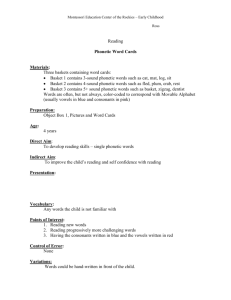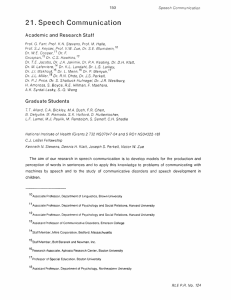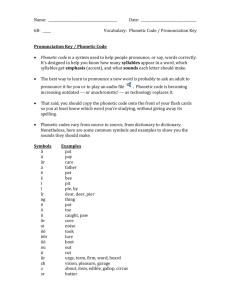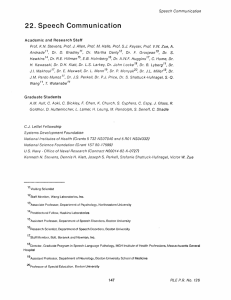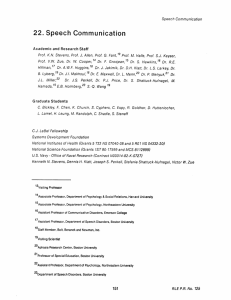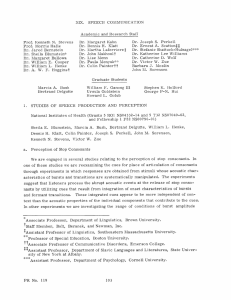XXIII. SPEECH COMMUNICATION Prof. K.N. Stevens Dr.
advertisement
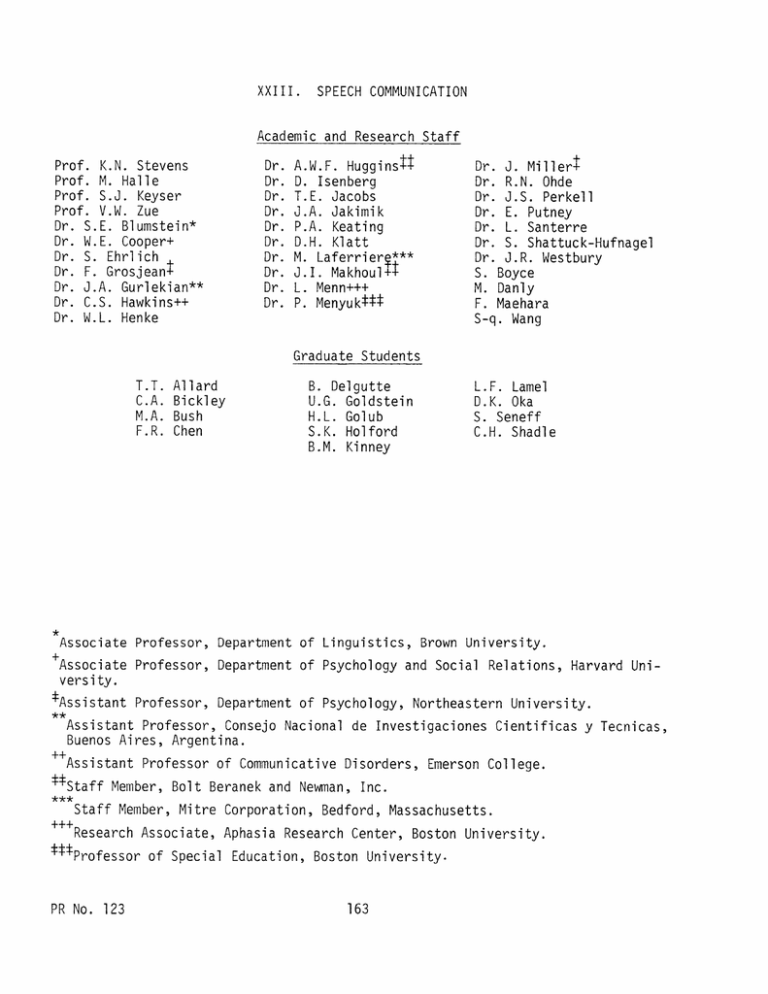
XXIII. SPEECH COMMUNICATION Academic and Research Staff Prof. K.N. Stevens Prof. M. Halle Prof. S.J. Keyser Prof. V.W. Zue Dr. S.E. Blumstein* Dr. W.E. Cooper+ Dr. S. Ehrlich Dr. F. Grosjeant Dr. J.A. Gurlekian** Dr. C.S. Hawkins++ Dr. W.L. Henke Dr. Dr. Dr. Dr. Dr. Dr. Dr. Dr. Dr. Dr. A.W.F. Hugginst D. Isenberg T.E. Jacobs J.A. Jakimik P.A. Keating D.H. Klatt M. Laferrierg*** J.I. Makhoul+t L. Menn+++ P. Menyukttt Dr. J. Millert Dr. R.N. Ohde Dr. J.S. Perkell Dr. E. Putney Dr. L. Santerre Dr. S. Shattuck-Hufnagel Dr. J.R. Westbury S. Boyce M. Danly F. Maehara S-q. Wang Graduate Students T.T. C.A. M.A. F.R. Allard Bickley Bush Chen B. Delgutte U.G. Goldstein H.L. Golub S.K. Holford B.M. Kinney L.F. Lamel D.K. Oka S. Seneff C.H. Shadle Associate Professor, Department of Linguistics, Brown University. +Associate Professor, Department of Psychology and Social Relations, Harvard University. *Assistant Professor, Department of Psychology, Northeastern University. Assistant Professor, Consejo Nacional de Investigaciones Cientificas y Tecnicas, Buenos Aires, Argentina. ++Assistant Professor of Communicative Disorders, Emerson College. tStaff Member, Bolt Beranek and Newman, Inc. Staff Member, Mitre Corporation, Bedford, Massachusetts. +++Research Associate, Aphasia Research Center, Boston University. *#Professor of Special Education, Boston University. PR No. 123 163 (XXIII. SPEECH COMMUNICATION) National Institutes of Health (Grant 5 RO1 NS04332 and Training Grant 2 T32 NSO07040) National Science Foundation (Grant BNS77-26871) C.J. LeBel Fellowships Kenneth N. Stevens, Dennis H. Klatt, Joseph S. Perkell, Victor W. Zue The aim of our research in speech communication is to develop models for the production and perception of phonetic segments of words in sentences, and to apply this knowledge to problems of communicating with machines by speech and to the study of communicative disorders and speech development in children. The work on speech production and perception in the past year has included a continuing series of studies on the perceptual, acoustic, and physiological bases for the phonetic features. For example, we are carrying out perceptual and acoustic studies of the /s-s/ distinction, the tense-lax distinction and other phonetic contrasts for vowels in several languages, the role of burst amplitude and spectrum in the place distinction for stop consonants, and the nasal-stop distinction. We have developed a mechano-acoustic model of stop-consonant production, and we are using this model to account for the voicing and burst characteristics observed in stops. Studies of the discharge patterns of auditorynerve fibers (in cat) in response to consonantal speechlike sounds are leading to insights into peripheral auditory processing of speech sounds. Perceptual studies of phonetic and psychophysical distance between vowel-like sounds that have been subjected to various kinds of spectral manipulations are also providing information concerning the resolution of the auditory system in response to these sounds. Several studies of articulatory movements and of the electromyographic signals underlying these speech movements have been carried out as part of our continuing effort to understand the control processes involved in the production of speech. One experiment examined the precision that is achieved in forming the vocal tract shape at different points in the oral and pharyngeal regions for different vowels. In another study the "anticipatory" strategies used by speakers in different languages were observed as they maneuver their articulators to produce sequences of phonetic segments. Other experiments have been concerned with the manner in which speakers adjust their strategies for the timing of jaw movements PR No. 123 164 (XXIII. SPEECH COMMUNICATION) for vowels that are produced with various degrees of jaw opening. An increasingly important part of our research is concerned with acoustic and articulatory phenomena that occur in sentences and in conversational speech in various dialects of English. This research is motivated in part by a continuing effort to implement models or systems for speech synthesis by machine and for speech recognition by machine. Phenomena of this type that have been studied during the past year include: rules for the synthesis of sentences from a phonetic description, strategies for recognizing phonetic elements in spectrograms of sentences, models of lexical access for words in sentence, the palatalization of alveolar fricatives in certain phonetic environments, the deletion of /t,d/ in Black English, and the changes in larynx output that occur from the beginning to the end of a spoken sentence. During the past year, considerable effort has been devoted to upgrading our facilities for analysis, synthesis, and editing of speech. A UNIX operating system has been installed in the PDP 11/60 speech computer, and user programs have been developed for recording and playback of speech, waveform editing, spectrum analysis of various kinds (including a "filterbank" designed to simulate certain psychophysically-based attributes of the auditory system), and extraction of parameters such as fundamental frequency and formant frequencies. We have continued to develop instrumentation for measurement and processing of physiological aspects of speech production. In one such project, we are implementing a magnetic-field-ranging technique for tracking movements of points on the tongue surface, in which specially designed miniature biaxial coils are attached to the tongue. Other projects relating to human speech and sound generation include: completion of a study of the characteristics of the cry of newborn infants, including both normal infants and those with certain pathologies; investigation of fundamental-frequency contours in the speech of deaf children, particularly the inadvertent deviations that occur in these contours for some children; completion of a thesis on the modelling of the vocal tract for children of different ages; and a study of fundamental-frequency contours in discourse between parents and children. PR No. 123 165





